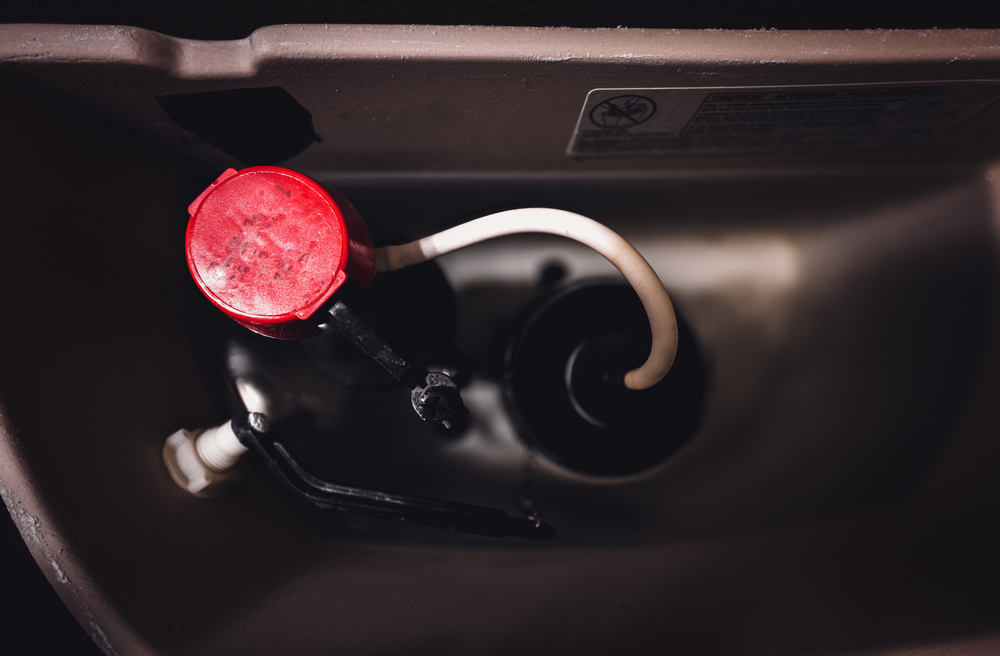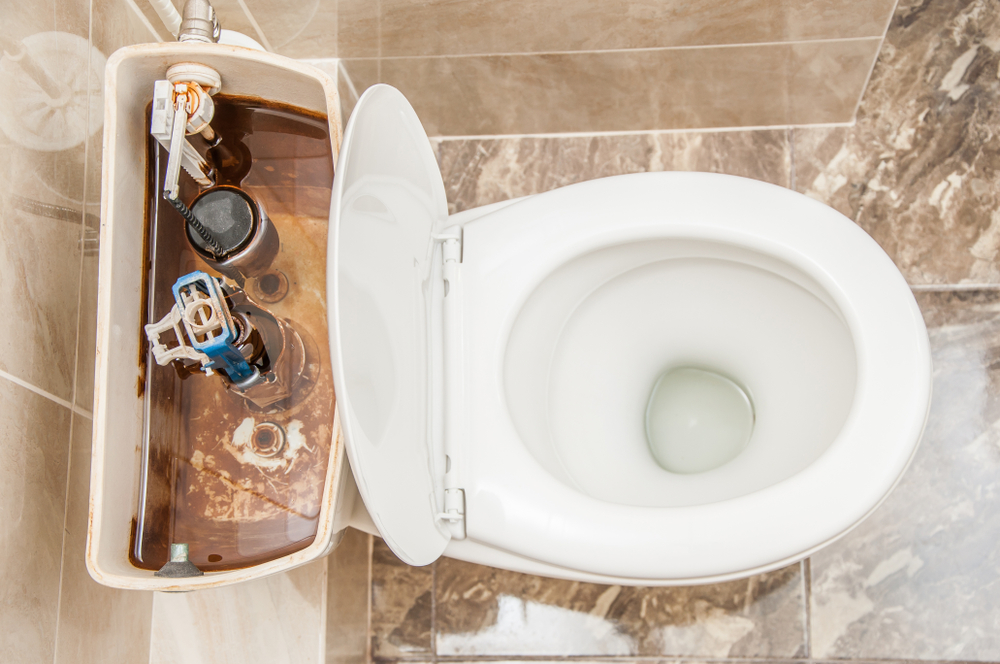
Experiencing issues with your toilet tank not filling up can inconvenience your daily life. Understanding the causes behind this common plumbing problem helps you determine the right action to fix it. There are many reasons why your toilet tank might not be filling as it should. It can range from simple fixes to more complex plumbing issues. Common causes include:
- A malfunctioning float mechanism
- A clogged water supply valve
- Problems with the fill valve
By identifying the root cause, you can take the appropriate steps to resolve the issue.
Let’s explore the explanations of and troubleshooting methods for each potential problem. Whether you’re a DIY enthusiast or simply trying to understand the issue before calling in a professional, this guide will help you.
7 Reasons Your Toilet Tank Isn’t Filling Properly
An unfilled toilet tank may lead to further plumbing repair if not attended to promptly. Here are the primary causes that might be affecting your toilet’s functionality:
The Fill Valve or Float Isn’t Adjusted
The most prevalent cause is an issue with the adjusted float or fill valve. After each flush, the fill valve controls the water flow into the toilet tank. This valve is regulated by a float, which acts as a signal to open the valve as the tank empties and closes it once it’s refilled with water.
During a flush, the water in the tank is depleted, causing the float to drop. This drop triggers the opening of the fill valve, allowing water to flow into the tank. As the tank fills and the water level rises, the float ascends, closing the fill valve. This cycle ensures the toilet tank is always ready for the next flush.
However, adjusting the fill valve or the float isn’t always a simple task. Improper adjustments can lead to significant issues, such as water overflows. These overflows not only waste water but can also cause damage to your bathroom flooring and fixtures.
Given the intricacies involved in adjusting these components, you should seek professional help. Hiring a plumber for this task is recommended because they have the expertise and tools required to make precise adjustments. This ensures your toilet functions efficiently and helps prevent potential water-related damages caused by incorrect adjustments.
Worn Toilet Flapper
A worn toilet flapper—the rubber gasket at the tank’s bottom—can lead to a constant water leak, preventing the tank from filling correctly. This wear and tear can result in wasted water, with over 200 gallons lost daily. To test for leaks, add food coloring to the tank and wait. If the water changes color, the flapper is leaking and needs to be replaced.
Damaged Overflow Tube
This component, which connects the tank to the bowl, serves a dual purpose: it prevents overflow and helps refill the bowl after each flush. The overflow tube ensures excess water flows into the bowl rather than spilling over the edges of the tank if the water level rises too high.
If this tube becomes damaged or cracked, it can cause significant issues. A primary problem with a compromised overflow tube is water leaking into the bowl. This continuous, and often unnoticed, leak can result in higher water bills due to the constant and unnecessary refilling of the tank.
A damaged overflow tube can also cause inadequate tank filling. This occurs because the tube directs some water back into the bowl. If it’s impaired, it may not perform this function effectively, leading to a lower water level in the tank. This can impact the efficiency of subsequent flushes.
It’s important to note that diagnosing issues with the overflow tube requires careful inspection. Signs of damage could include visible cracks, leaks, or an inability to maintain the correct water level in the tank. In some cases, repairing the overflow tube might be possible, but replacement is often the more effective solution.
Given the complexity of this task, you should seek assistance from a professional plumber. They have the necessary skills and tools to diagnose the issue and perform repairs or replacements accurately. Regular checks and maintenance of the overflow tube and other toilet components can help detect problems early and prevent water wastage.
 Trip Lever Isn’t Working Correctly
Trip Lever Isn’t Working Correctly
The trip lever links between the flushing handle and the toilet flapper. This lever is essential for properly operating a toilet, initiating flushing, and ensuring the tank refills correctly.
However, issues can arise when the trip lever gets stuck or breaks. A stuck lever is a common problem and can lead to significant inefficiencies in the toilet’s operation. When the lever is stuck, it usually prevents the flapper from sealing properly, which results in continuous water drainage from the tank to the bowl—even when the toilet isn’t being used. This not only wastes water but also means the tank can’t fill to the level required for an effective flush.
Another consequence of a malfunctioning trip lever is incomplete tank filling. Since the flushing mechanism relies on a certain water level in the tank, any disruption in this process—such as a stuck lever—can affect the flush’s efficiency.
A common fix is manually repositioning the trip lever. This is often a simple adjustment that restores the function of the lever and the flapper. However, if the lever is broken or severely damaged, replacing the lever is necessary.
Replacing a trip lever is a straightforward process and can be a viable DIY project. However, seeking assistance from a professional plumber is advisable for those who aren’t comfortable performing plumbing tasks. Regular maintenance and inspections of the trip lever and other toilet components can also help detect potential issues early, ensuring the longevity and efficient operation of your toilet. It’s also important to be cautious with the force you apply to the flushing handle, as excess pressure can cause more frequent issues with the trip lever.
Toilet is Leaking or Cracked
Leaks in the tank or bowl, often identified by standing water, can impact the toilet’s ability to refill. Common causes include loose bolts or a cracked bowl.
The Shut-Off Valve Isn’t Open Fully
A partially closed shut-off valve near the toilet can hinder the tank from filling. Always check this valve first in case of refill issues. It might have been adjusted inadvertently.
Low Water Pressure
Insufficient water pressure in your home can cause the toilet to stop filling prematurely. This issue can stem from a partially closed main shut-off valve, faulty water pressure regulator, or limescale buildup. A comprehensive inspection by a plumber can help identify and rectify low water pressure issues.
 Plumbing Repair Services in Framingham, MA, and Other Areas
Plumbing Repair Services in Framingham, MA, and Other Areas
Understanding the causes of a malfunctioning toilet tank ensures the smooth operation of your home’s plumbing system. Proper diagnosis and timely repair can maintain the efficiency and longevity of your toilet.
Homeowners in Framingham, Newton, Marlborough, Natick, Waltham, and surrounding areas in Massachusetts can access professional plumbing repair services from licensed plumbers at Nicholson. Our experienced technicians can handle any emergency services involving toilet tank repairs. Whether you need a simple adjustment or a more complex replacement, our expertise will ensure your plumbing concerns are addressed promptly and properly.
Relying on professional services provides peace of mind that the repairs will be done right the first time, preventing future issues and saving you time and money in the long run. Nicholson’s plumbing repair services are a reliable solution for all your toilet and plumbing-related needs. Contact us today to book a service.

